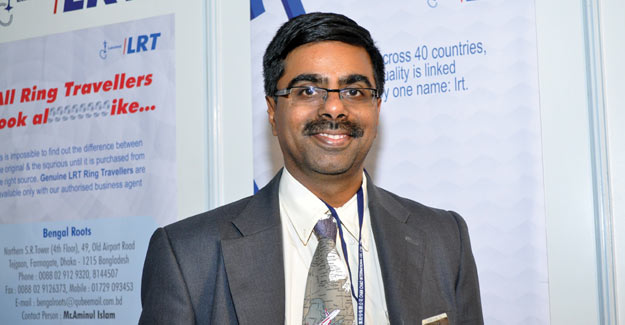'Bangladesh Will Remain One Of The Lowest Cost, Most Competitive Countries For a Long Time'
'Bangladesh Will Remain One Of The Lowest Cost, Most Competitive Countries For a Long Time'

The Bangladesh industry is working towards improving its image in the international market, going through a number of inspections for social, environmental, technical and now building and fire safety audits. While the outcome will be a stronger, more compliant industry, Mohammad Hasan, General Manager, Babylon Group, cautions against an unrealistic approach that some agencies could adopt, which could end up hurting instead of helping the industry.
What are your views on the factory inspections that have started to some extent?
The intention is very good, unfortunately we needed a Rana Plaza to start paying heed to this aspect of compliance. But I believe that all the agencies concerned - the government, the BGMEA, Accord, Alliance, and others, must take into account the ground reality to ensure that the findings of the inspections can be practically implemented. For instance, in some cases, we hear that factories are given a limited period of time to rectify structural or wiring faults, this may not always be possible. Smaller companies need to be sensitised about the need for such compliances and rectifications. There are instances where the factories which are otherwise compliant, have been ranked low on building and fire safety. So, a more realistic approach needs to be adopted. One will also have to consider the fact that these renovations, in some cases could cost a lot. A number of factories today are operating at very low capacities due to slack orders. Keeping factories closed for renovations could result in a heavy financial burden for these units.
We hear of buyers agreeing to pay better prices. How far is this true?
I have not come across any such instance yet. The industry is still complaining about getting very low prices from the buyers. This is a demand-supply situation. Bangladesh RMG industry has huge capacities, which cannot be left idle. Today, even the best of factories are operating at only 70-80 percent capacity. Buyers are aware of this, and hence have a better bargaining power. This is unfortunate. If buyers are talking about compliances, they should also follow some ethical practices. In cases where prices may have increased, they are not commensurate with the increase in costs, if cost of producing an apparel has increased 30 cents, a buyer may increase his price by just 3-5 cents. Buyers are generally resisting a price increase.
Why is the industry only talking about lower wages to make business viable? Why do they not try and reduce other costs?
That is an important area that the industry has to look at. There is a lot of potential to improve efficiency. There are a lot of wastages in apparel manufacturing, which can be reduced. There are very good technologies and systems available in the market which must be invested in, to become efficient, cost-effective. Already, the government is offering a lot of incentives to the garment industry, this industry does not attract domestic duties, working capital costs are relatively low, import duties are quite low. Even without the GSP benefits, Bangladesh RMG industry is quite competitive, I know a lot of my colleagues and friends in the industry will argue with me against this statement.
Bangladesh's apparel exports had slowed down some months ago, we hear they are picking up again. Is that so?
After Rana Plaza incident, orders had come down. That was also an economic cyclical trend. Due to the political unrest, many countries had sounded travel alerts for the country. Now, after the elections, there is some stability in the country. Buyers have begun travelling again. We expect good orders from April-May onwards.
How is labour availability in the industry?
There is a lot of labour available today. Especially after Rana Plaza, unemployment has increased, around 150,000 workers lost their jobs, and one can find lots of workers waiting for work at factory gates. Added to this, the slowdown in exports resulted in lower capacity utilisation, further impacting labour force. It will take a few months for this workforce to get absorbed in the industry.
Where do you see the future of the Bangladesh textile and apparel industry?
This industry has a lot of potential. It is one of the lowest cost industries among apparel industries in the world. There will be no other Bangladesh for at least another 20 years. This is a long time for the industry to identify and address its problems-infrastructure, energy, trained workforce, organised functioning; consolidate, explore newer markets, develop the home market, & come into its own.



 textileexcellence
textileexcellence 







